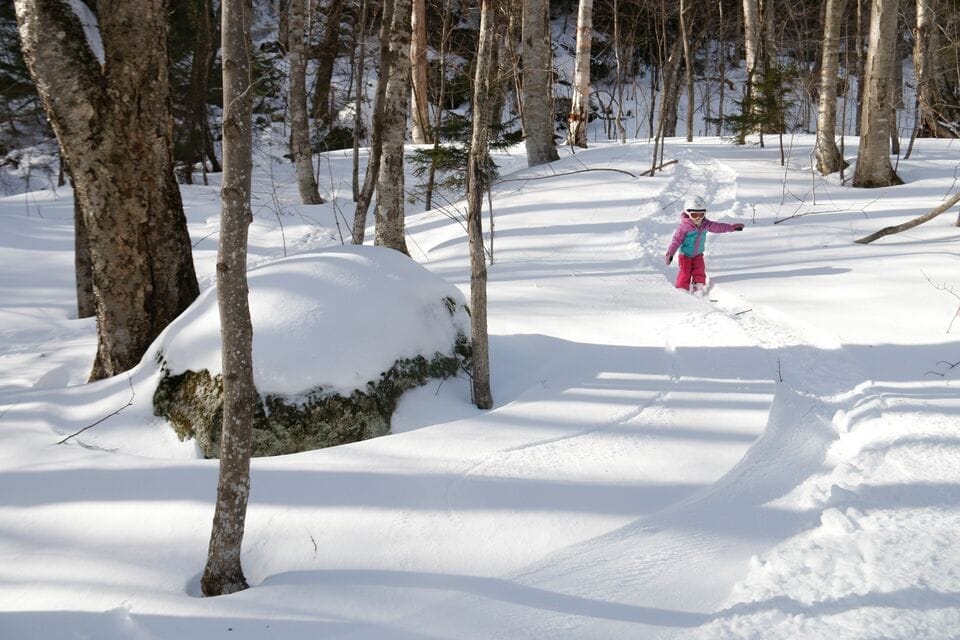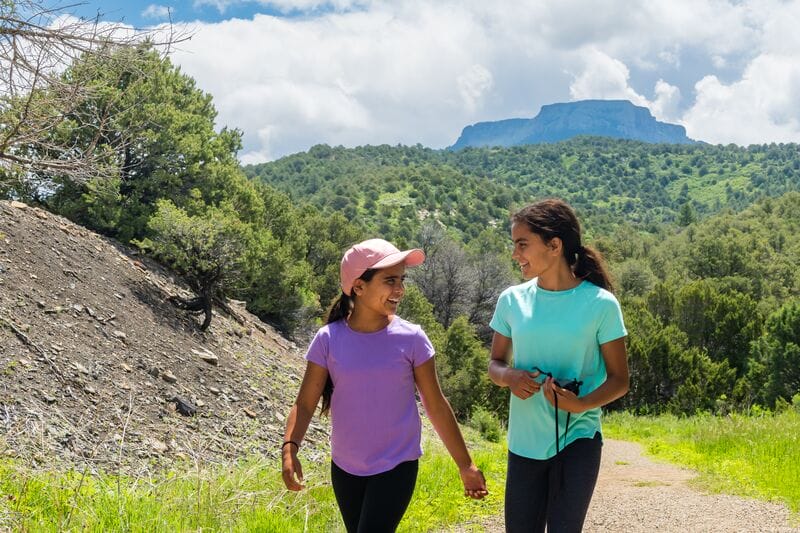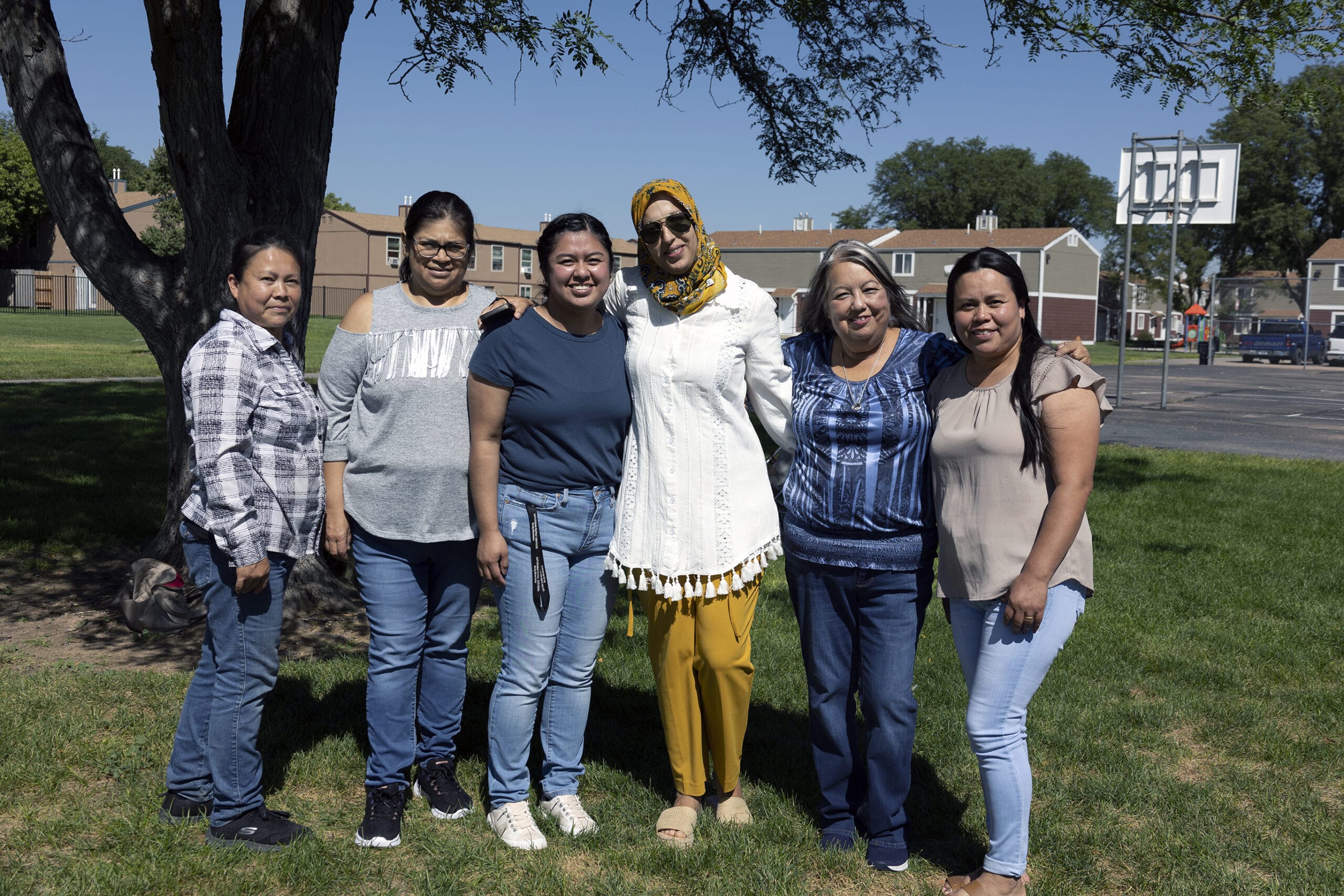
This “dream team” relies on each other to explore the wilderness
This “dream team” relies on each other to explore the wilderness
If you like getting outside, you know how important it is to find an adventure buddy: someone who’s as excited as you are to hit the trail, whom you can shoot the breeze with, and whom you can trust to have your back and keep you motivated when the going gets rough.
Trevor Hahn and Melanie Knecht are adventure buddies extraordinaire. Trevor has glaucoma and lost his sight five years ago, and Melanie was born with spina bifida and doesn’t walk. So they’ve teamed up to explore the wilderness: when they’re out on trail, Trevor carries Melanie on his back, and Melanie guides Trevor with her voice, directing him where to step and alerting him to upcoming obstacles.
 Trevor Hahn and Melanie Knecht have teamed up to explore the mountains together. Melanie guides Trevor with her voice, and Trevor carries Melanie on his back.Photo credit: Aaron Colussi
Trevor Hahn and Melanie Knecht have teamed up to explore the mountains together. Melanie guides Trevor with her voice, and Trevor carries Melanie on his back.Photo credit: Aaron Colussi
This summer, Hahn and Knecht are training for their first big team challenge: summiting one of Colorado’s famous “fourteeners”—mountains over 14,000 feet high. We caught up with the pair on a rest day to find out what keeps them moving.
Did you both grow up being pretty outdoorsy?
Trevor Hahn: I’m a Fort Collins native, so we were always out as a family camping and hiking all over the mountains. On up through my twenties, I could still see, and I was into backcountry snowboarding, river sports, mountain biking, peak bagging. I pretty much grew up in nature and it was my escape from everything.
Melanie Knecht: Access to the outdoors is part of what drew me to Colorado for grad school. I grew up in the Dallas-Fort Worth area, where there aren’t the same kind of opportunities to get out like Trevor had. But my dad would still take my sister and me out tubing on the boat, and camping, and hunting and fishing.
How’d you meet and start hiking together?
MK: The adaptive sports community in Fort Collins is really tight, so it’s not that uncommon to see the same people at different events. I first met Trevor at a boxing class, and then ran into each other again a few weeks later at a rock climbing gym. Trevor and his wife started inviting me over to watch football at their house. So we were sitting around talking, and I was curious about how he’s adapted things to keep doing what he wants to do.
TH: I was telling Mel about how last spring I joined a team of adaptive athletes to summit a 17,500-foot peak in Nepal. My teammates guided me up using a bell-and-voice system. That’s mostly how I’ve been able to go hiking since I lost my sight, by relying on someone to guide me. I was trying to think of how I can have more purpose on a trail rather than someone else doing most of the work.
MK: And back in 2012, I went to Easter Island with a few friends, which was so cool. But, as you can imagine, it’s this tiny, remote island, and it’s not accessible in any way. So we brought a backpack for carrying toddlers around, and my friend carried me around Easter Island. I was able to see things I’d never have seen if I’d have just been in a chair. But it was super uncomfortable for both of us, because he hadn’t trained for it, and the pack we were using wasn’t designed to carry a grown woman.
TH: So Melanie brought this idea up to me: “It’d be really cool if you carried me and then you could be the legs and then I could guide you because I can see.” It made perfect sense. We both have the same responsibility: if one of us goes down, the other one goes down. It shifts the whole dynamic from feeling like a burden, to being essential for someone else’s experience in the outdoors.
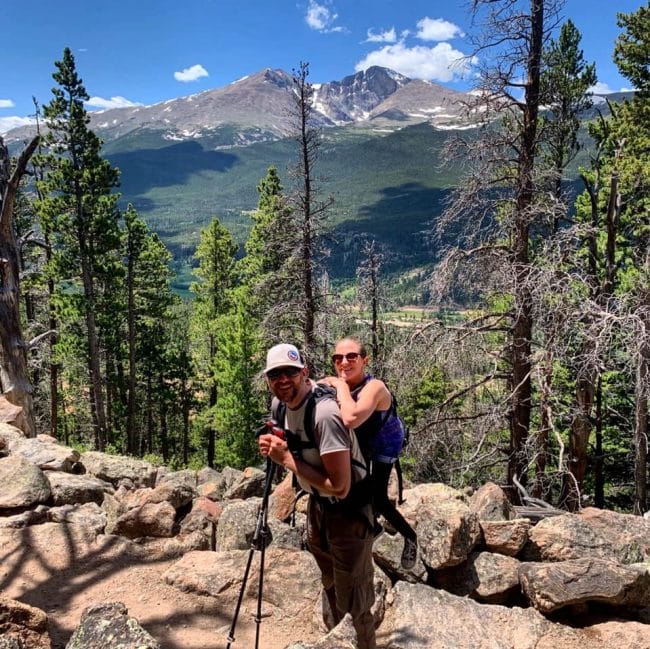 You can follow Knecht and Hahn’s journey on social media at Hiking With Sight.Photo credit: Hiking With Sight
You can follow Knecht and Hahn’s journey on social media at Hiking With Sight.Photo credit: Hiking With Sight
MK: That always gets to me. I don’t care who you are, you don’t really want to be responsible for carrying someone all the time. But the fact that we’re each helping the other out takes the pressure off. I don’t have to worry as much, like, “Oh god, is this person not enjoying their hike because of me? It’d be so much easier without me here.”
How does it work when you’re out on trail?
TH: I did a bunch of research last winter and came across this company that makes packs designed to carry people with special needs. They designed a custom one to carry someone Melanie’s size, where she sits on basically a bike seat and her arms and legs are free, and it’s just a regular backpack for me. It’s pretty comfortable for both of us.
MK: Trevor is definitely a great hiker, so that makes my job guiding him easier. Still, it’s mentally exhausting to keep up a constant stream of directions, so we need to take breaks every mile or so. So far, a lot of our time training together has been me figuring out what I do and don’t need to say. Even still I probably over-guide him, but I’d rather be safe than sorry.
TH: The biggest things I want to know about from Melanie aren’t necessarily what we’re about to walk over, because I can manage a lot of that stuff with my poles. But I need to know what’s surrounding us. Like if there’s a real serious drop-off to the right, I’ll want to know that if I do trip, I need to try to fall to the left.
Has teaming up changed what you get out of spending time in the outdoors?
MK: I’d never been on a true, actual, proper hike until Trevor came along. So for me, it’s changed everything. And the fact that it’s going really well is validating: like, yes, we are able to do things people say we can’t do. I feel motivated to try more outdoor sports, for one: I’ve always been a swimmer, but now I’m climbing, and boxing, and doing archery, and hand-cycling. I’m good at cycling, and I love it, which his great because Fort Collins is a huge bike town.
TH: Being on trail, moving through the expansive space of wilderness, has always been an important part of my life. It makes me so happy to be able to help someone else experience that. That first hike we went on, Mel was so happy she was giddy.
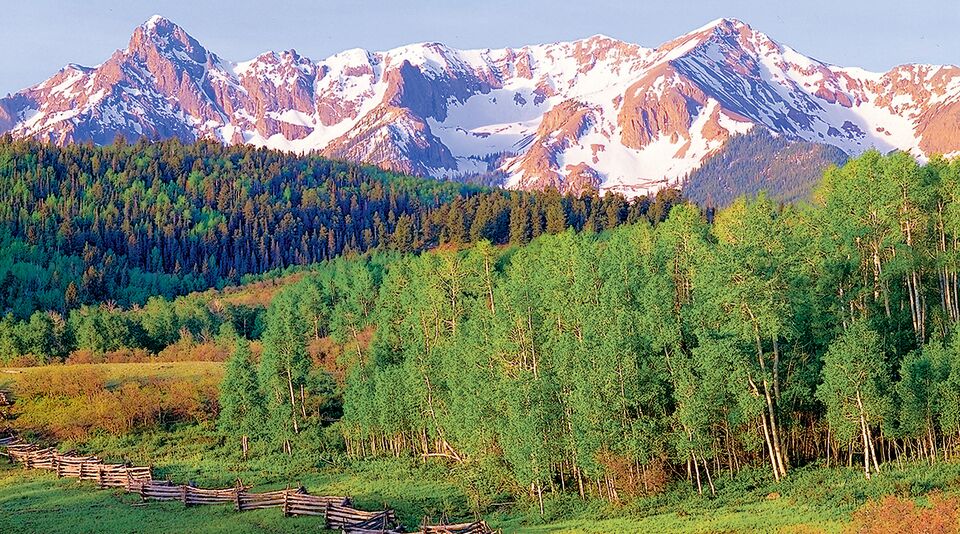 We believe everyone needs access to the outdoors. That’s why we’ve worked to protect land, create parks, and connect people to trails and wild places across the Rocky Mountains in places like the rugged Sneffels Range, and around the country. Photo credit: John Fielder
We believe everyone needs access to the outdoors. That’s why we’ve worked to protect land, create parks, and connect people to trails and wild places across the Rocky Mountains in places like the rugged Sneffels Range, and around the country. Photo credit: John Fielder
MK: It’s been great to share our story with people, and I hope that it encourages other people to try what we’re doing, or just for anyone to think outside of whatever box they’ve been put in. It goes to show you that we really are stronger together.
What do you want people to know about public lands and accessibility?
MK: By and large, the outdoors just aren’t accessible, like at all. When I go to a national park, usually the most I can expect is like a half-mile of paved road, and then it just ends. If I’m on my own or I don’t have a friend willing to carry me, that’s all I get.
Society makes all kinds of excuses for doing just the bare minimum for accessibility. It makes me so mad! The places Trevor and I have gone hiking are so vast. If I’m there in my chair, why do you only give me half a mile? Is it because of cost? Or is it just there haven’t been enough people to speak up and say, “Hey, this isn’t right”?
TH: I’ve always felt like most of the best stories and experiences happen on the side of the mountain. The journey to the top, and that sense of accomplishment, that’s what makes being up there rewarding.
MK: We all deserve that perspective you can only get from getting to the top of a mountain. We all need a chance to step away from the daily grind and feel like we’re a little piece of stardust.
Want to follow along on Melanie and Trevor’s journey? Check out Hiking With Sight on Facebook, and follow @hiking_with_sight on Instagram.
The Active Transportation Infrastructure Investment Program (ATTIIP) is a vital initiative that helps expand trails connecting people to nature and their broader neighborhoods. Despite this importance, Congress allocated $0 for ATTIIP in this year’s appropriations process. We cannot delay investments in safe, active transportation systems. Urge Congress to fully fund the ATTIIP!


Donate to become a member, and you’ll receive a subscription to Land&People magazine, our biannual publication featuring exclusive, inspiring stories about our work connecting everyone to the outdoors.
See how our supporters are helping us connect people to the outdoors across the country.



